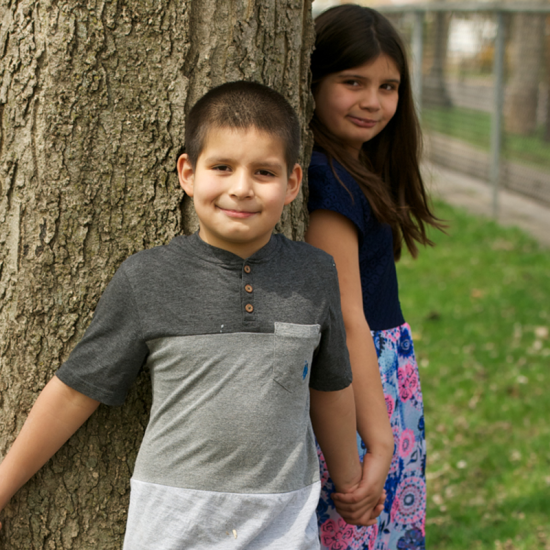Helping Children Cope with Fear, Stress and Anxiety in a Global Pandemic or Crisis
We’re all learning new ways to live in a world overwhelmed by a global pandemic. In a matter of days, the rules have changed and routines such as going to work or school, attending public gatherings and socializing with families and friends have stopped. Most of us are staying in our homes, but we’re still barraged with constant information about COVID-19 and its devastating effects on our social fabric. We talk about it with our friends on the phone or over social media and it’s constantly on the news and in newspapers. As adults, we’re anxious and worried, and it can be hard to rely on our usual coping strategies for mental wellness because we’ve never been in a situation like this before. But, what about children’s mental health?
Children haven’t had as much time or experience to build a “tool box” of positive ways to manage intense fear and anxiety. The predictable routines that promote resilience to overwhelming events are gone. They tune into our distress and in the absence of clear, understandable information, they often make up their own stories that might be worse than reality. While we may feel that we’re protecting our children from worry by not talking about our new reality, they need us, perhaps more than ever, to help them manage their stress by giving them honest, age-appropriate information.
With time and support from parents, guardians, caregivers and other trusted adults, most children will adapt successfully. Temporary setbacks such as sleep disturbance or difficulty concentrating are normal. Age, personality, developmental level and previous life experiences influence how children respond to distress. Children who have had previous trauma, abuse histories or other stressful life experiences may have more difficulty regulating their feelings and behaviors.
Look out for the following signs that a child may exhibit when struggling to cope with their fears, stress and/or anxiety.
- Preschool-Age Children (18 months-5 years old): Becoming unusually quiet or agitated; increased clinging to parents/caregivers; fear of the dark; increased difficulty with changes and transitions; return to earlier behaviors such as thumb sucking and “baby talk”; loss of appetite; toileting accidents.
- School-Age Children (5-9 years old): Difficulty falling or staying asleep; nightmares; physical complaints like headaches or stomach aches that don’t have a medical cause; behavioral changes such as becoming easily upset or aggressive; clinginess; difficulty concentrating; loss of interest in friends.
- Adolescents (10-19 years old): Changes in eating and sleep patterns; loss of interest in social activities; becoming less responsible and independent; physical complaints; significant increase or decrease in physical activity.
Young children need to know basic information about how the virus is spread and what they can do to stop germs and stay healthy. Help them wash their hands several times a day while singing “Twinkle, Twinkle Little Star” twice – that takes about 20 seconds. Reassure them that you are there to keep them healthy; “Grownups are working hard to keep you safe.”
Keep information you share with your child(ren) age-appropriate.
- School-age children might ask more direct questions about safety and it can be challenging to answer these as we struggle with our own anxiety. It’s OK to let children know that you are concerned but are staying calm. If you don’t know the answer to a question, don’t make something up. Tell your child, “I’m not sure about that, but I’ll find out and let you know.”
- Adolescents may be especially affected by the loss of anticipated events and milestones such as sports seasons, graduation, prom, visiting colleges. After acknowledging and respecting their feelings of sadness, you can help them move on from what was lost and shift to making new goals and plans.
You can help youth of all ages cope during this pandemic (or any crisis).
- Take time to talk. Be available to talk and answer questions. Reassure children that it’s okay to talk about how they feel. Answer their questions but don’t offer unnecessary information. Be ready to repeat information and explanations many times. Our brains don’t process and retain information very well when we’re under stress. Some children might not want to talk about their feelings, so offer alternatives, like drawing a picture or writing a story.
- Take care of yourself and manage your own stress. Get enough sleep, eat healthy meals, exercise and connect with friends and family members.
- Limit media exposure. Monitor how much your child (of any age) is exposed to coverage of the pandemic and eliminate access to TV or social media if necessary. Children can easily misinterpret information and imagine the worst.
- Maintain daily routines. This is really hard if your work life has been turned upside down, but routines offer predictability and a sense of control for all of us when much of our lives seem to be out of control. And be sure to build in some time for breaks and fun!
